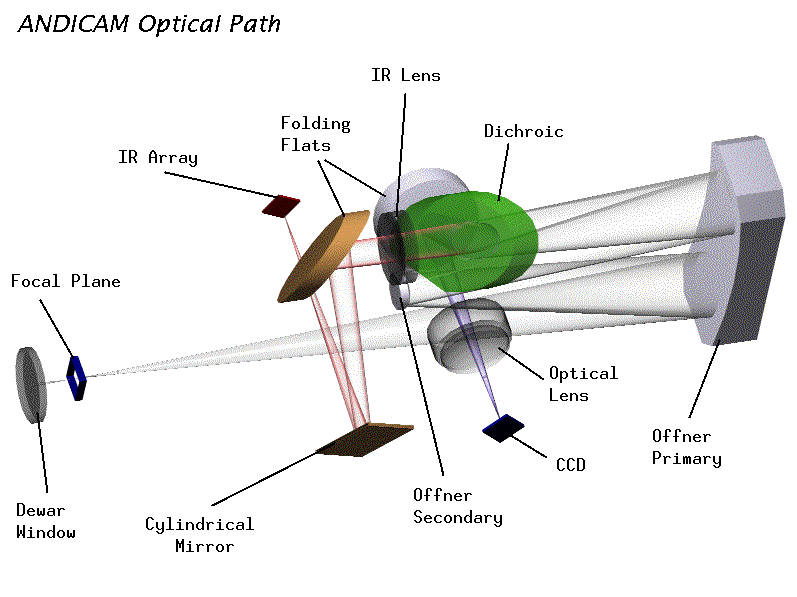
Both ANDICAM and DANDICAM share optical, mechanical, electronic, and software designs and will have similar CCDs and IR array detectors (see figure above). The quantum efficiency and cosmetics of the CCDs are excellent (see figure below). The throughput of the instrument should be excellent at all wavelengths from U to K. The U sensitivity in particular should be very high, since the CCD quantum efficiency is very good at U and the instrumental optics are designed to work well at U. Of course, there is no substitute for actual measurements, but the throughput at U should be >20% (including telescope and atmosphere), and >40% for BVRIJHK.
The optical portion of ANDICAM has been deployed at the CTIO/Yale 1-m telescope and saw first light on 6-7 June 1998, taking a total of 36 PLANET images. The infrared channel was installed at CTIO in 1999. Deployment of the complete optical-IR DANDICAM to South Africa has now taken place, and engineering tests are proceeding in March 2000. For more details on ANDICAM and DANDICAM, check out the OSU ANDICAM website, including schematics and pictures of what is actually happening at the Ohio State astronomical instrument lab.